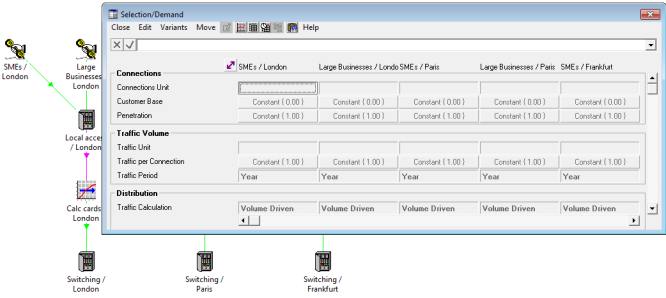The natural evolution of many business models, whether in STEM or any other platform, tends to involve the manual replication of core fragments of model structure, perhaps for different customer segmentations or service types, or for different geographical classifications, by cost or by configuration.
Manual replication is time-consuming and tedious: copied elements must be renamed and tailored to suit the needs of each individual copy. Moreover, there is no direct way to verify the consistency of the copied elements as part of an auditing process. This second point becomes critical when, almost inevitably, some change is required within the original core fragment. The only alternative to making the same changes in parallel is to revert to the original model and repeat the copying – but both processes are tedious and susceptible to human error, especially after several iterations.

Manually copied model structure
Now, if you were to describe the structure of such a model to a colleague, you would not describe the original fragment, and then repeat all the detail for each copy. Rather, you would describe the original, and then explain that the structure is replicated for several named variants, specifying in detail only how the respective variants differ.
STEM’s template replication
concept allows you to translate this principle of concision into software. Firstly, elements which must be reproduced for multiple geographical areas are identified as a template, together with the key differentiating parameters. Secondly, the names of separate geographical areas are specified, together with the corresponding key values for each area. STEM then automatically generates an expanded model with template replication for the named areas, and implicit aggregation for common model features, e.g., backbone network traffic, in a process that is logical, concise, extensible and easy to maintain and audit.
The following example illustrates how these principles are applied to generate a model which is both diverse and auditable without any manual copying. Consider the provision of voice telephony to SMEs and large businesses with a requirement to capture the costs of local access and switching, as distinct in three cities (London, Paris and Frankfurt), as well as the common cost of network management.